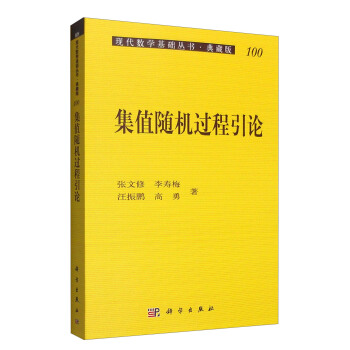![國外數學名著係列(影印版)41:常微分方程和微分代數方程的計算機方法 [Computer Methods for Ordinary Differential Equations and Differential-algebraic Equations]](https://pic.windowsfront.com/11918501/57431b9aNcc34b3ad.jpg)

具體描述
內容簡介
Designed for those people who want to gain a practical knowledge of modem techniques,this book contains all the material necessary for a course on the nmnerical solution of differential equations.Written by two of the field's leading athorities,it provides a unified presentation of initial value and boundary value problems in ODEs as well as differential- algebraic equations.The approach is aimed at a thorough understanding of the issues and methods for practical computation while avoiding an extensive theorem-proof type of exposition.It also addresses reasons why existing software succeeds or fails. This book is a practical and mathematically well informed introduction that emphasizes basic methods and theory,issues in the use and development of mathematical software,and examples from scientific engineering applications.Topics requiring an extensive amount of mathematical development,such as symplectic methods for Hamiltonian systems,are introduced,motivated,and included in the exercises,but a complete and rigorous mathematical presentation is referenced rather than included. This book is appropriate for senior undergraduate or beginning graduate students with a computational focus and practicing engineers and scientists who want to learn about computational differential equations.A beginning course in numerical analysis is needed,and a beginning course in ordinary differential equations would be helpful.內頁插圖
目錄
List of FiguresList of Tables
Preface
Part Ⅰ:Introduction
1 Ordinary Differential Equations
1.1 IVPs
1.2 BVPs
1.3 Differential-Algebraic Equations
1.4 Families of Application Problems
1.5 Dynamical Systems
1.6 Notation
Part Ⅱ:Initial Value Problems
2 On Problem Stability
2.1 Test Equation and General Definitions
2.2 Linear,Constant-Coefficient Systems
2.3 Linear,Variable-Coefficient Systems
2.4 Nonlinear Problems
2.5 Hamiltonian Systems
2.6 Notes and References
2.7 Exercises
3 Basic Methods,Basic Concepts
3.1 A Simple Method:Forward Euler
3.2 Convergence,Accuracy,Consistency,and O-Stability
3.3 Absolute Stability
3.4 Stiffness:Backward Euler
3.4.1 Backward Euler
3.4.2 Solving Nonlinear Equations
3.5 A-Stability,Stiff Decay
3.6 Symmetry:Trapezoidal Method
3.7 Rough Problems
3.8 Software,Notes,and References
3.8.1 Notes
3.8.2 Software
3.9 Exercises
4 One-Step Methods
4.1 The First Runge-Kutta Methods
4.2 General Formulation of Runge-Kutta Methods
4.3 Convergence,O-Stability,and Order for Runge-Kutta Methods
4.4 Regions of Absolute Stability for Explicit Runge-Kutta Methods
4.5 Error Estimation and Control
4.6 Sensitivity to Data Perturbations
4.7 Implicit Runge-Kutta and Collocation Methods
4.7.1 Implicit Runge-Kutta Methods Based on Collocation
4.7.2 Implementation and Diagonally Implicit Methods...
4.7.3 Order Reduction
4.7.4 More on Implementation and Singly Implicit RungeKutta Methods
4.8 Software,Notes,and References
4.8.1 Notes
4.8.2 Software
4.9 Exercises
5 Linear Multistep Methods
5.1 The Most Popular Methods
5.1.1 Adams Methods
5.1.2 BDF
5.1.3 Initial Values for Multistep Methods
5.2 Order,O-Stability,and Convergence
5.2.1 Order
5.2.2 Stability:Difference Equations and the Root Condition
5.2.3 O-Stability and Convergence
5.3 Absolute Stability
5.4 Implementation of hnplicit Linear Multistep Methods
5.4.1 Functional Iteration
5.4.2 Predictor-Corrector Methods
5.4.3 Modified Newton Iteration
5.5 Designing Multistep General-Purpose Software
5.5.1 Variable Step-Size Formulae
5.5.2 Estimating and Controlling the Local Error
5.5.3 Approximating the Solution at Off-Step Points
5.6 Software,Notes,and References
5.6.1 Notes
5.6.2 Software
5.7 Exercises
Part Ⅲ:Boundary Value Problems
6 More Boundary Value Problem Theory and Applications
6.1 Linear BVPs and Green's Function '.
6.2 Stability of BVPs
6.3 BVP Stiffness
6.4 Some Reformulation Tricks
6.5 Notes and References
6.6 Exercises
7 Shooting
7.1 Shooting:A Simple Method and Its Limitations
7.1.1 Difficulties
7.2 Multiple Shooting
7.3 Software,Notes,and References
7.3.1 Notes
7.3.2 Software
7.4 Exercises
8 Finite Difference Methods for Boundary Value Problems
8.1 Midpoint and Trapezoidal Methods
8.1.1 Solving Nonlinear Problems:Quasi-Linearization
8.1.2 Consistency,O-Stability,and Convergence
8.2 Solving the Linear Equations
8.3 Higher-Order Methods
8.3.1 Collocation
8.3.2 Acceleration Techniques
8.4 More on Solving Nonlinear Problems
8.4.1 Damped Newton
8.4.2 Shooting for Initial Guesses
8.4.3 Continuation
8.5 Error Estimation and Mesh Selection
8.6 Very Stiff Problems
8.7 Decoupling
8.8 Software,Notes,and References
8.8.1 Notes
8.8.2 Software
8.9 Exercises
Part Ⅳ:Differential-Algebraic Equations
9 More on Differential-Algebraic Equations
9.1 Index and Mathematical Structure
9.1.1 Special DAE Forms
9.1.2 DAE Stability
9.2 Index Reduction and Stabilization:ODE with Invariant
9.2.1 Reformulation of Higher-Index DAEs
9.2.2 ODEs with Invariants
9.2.3 State Space Formulation
9.3 Modeling with DAEs
9.4 Notes and References
9.5 Exercises
10 Numerical Methods for Differential-Algebraic Equations
10.1 Direct Discretization Methods
10.1.1 A Simple Method:Backward Euler
10.1.2 BDF and General Multistep Methods
10.1.3 Radau Collocation and Implicit Runge-Kutta Methods
10.1.4 Practical Difficulties
10.1.5 Specialized Runge-Kutta Methods for Hessenberg Index-2 DAEs
10.2 Methods for ODEs on Manifolds
10.2.1 Stabilization of the Discrete Dynamical System
10.2.2 Choosing the Stabilization Matrix F
10.3 Software,Notes,and References
10.3.1 Notes
10.3.2 Software
10.4 Exercises
Bibliography
Index
前言/序言
用戶評價
作為一名在科研道路上摸索的初學者,我深知掌握一套紮實的數值計算方法是解決許多科學問題的關鍵。而微積分方程,尤其是那些包含代數約束的微分代數方程,在現實世界的建模中扮演著至關重要的角色,從物理模擬到生物係統,無處不在。因此,當我在書架上看到這本《常微分方程和微分代數方程的計算機方法》時,它如同黑暗中的一盞明燈。我期待這本書能夠提供一套係統而全麵的方法論,教會我如何將抽象的數學模型轉化為實際可行的計算流程。我預想書中會深入講解各種經典的數值求解技術,例如隱式方法、多步法,以及它們在處理 stiff(剛性)問題時的優勢,而“微分代數方程”的加入,更是意味著它會觸及到更前沿、更具挑戰性的領域,我希望書中能提供一些專門的、能夠有效處理這類方程組的數值方法,並深入剖析其理論依據。更重要的是,我期望書中能夠詳細闡述這些方法在計算機上的實現細節,包括算法的穩定性、收斂性分析,以及如何優化計算效率,甚至可能提及一些常用的數值計算庫和編程技巧,這將極大地幫助我將理論知識轉化為解決實際問題的能力。
評分這套“國外數學名著係列(影印版)”確實是很多數學愛好者和研究者心中的寶庫,尤其是41捲的這本《常微分方程和微分代數方程的計算機方法》。雖然我還沒有機會深入研讀這本書,但從它在學術界的聲譽和許多前輩的推薦中,我能感受到它所蘊含的分量。通常這類影印版的經典著作,最大的優勢在於保留瞭原汁原味的學術錶達,沒有瞭翻譯過程中的可能信息損失,對於理解作者的思路和研究的細微之處至關重要。想象一下,當你在攻剋一個復雜的數值方法問題時,能夠直接接觸到最前沿、最權威的數學語言,那是一種何等的享受和啓發。我尤其期待書中關於“計算機方法”的部分,這意味著它不僅僅是理論的堆砌,更會涉及到實際的計算實現。在當今這個數據驅動的時代,理論與實踐的結閤顯得尤為重要,尤其是在求解高階、大規模的微分方程組時,高效、魯棒的數值算法更是不可或缺。這本書的名字就足以激發起我對各種迭代法、隱式方法、以及如何處理微分代數方程這類更一般、更睏難問題的興趣。我猜想,書中一定會有詳細的算法介紹、數學推導,甚至可能包含一些僞代碼或者對經典軟件庫的提及,這對於希望將理論付諸實踐的研究生或者工程師來說,將是極其寶貴的資源。
評分作為一名對數值分析領域充滿好奇的學生,我一直以來都對如何用計算機解決那些僅憑解析方法難以應對的數學問題抱有濃厚的興趣。這本書的題目《常微分方程和微分代數方程的計算機方法》立刻吸引瞭我的目光,它精準地觸及瞭我學習的痛點和興趣點。我腦海中浮現齣的是一本厚重、嚴謹的學術專著,它會詳細地介紹各種數值積分方法,比如顯式歐拉法、改進歐拉法、龍格-庫塔方法等,並且會深入剖析它們的收斂性、穩定性和精度。更讓我感到興奮的是,書中還會探討“微分代數方程”這類看似比常微分方程更復雜的方程組。我瞭解到,這類方程在很多物理、工程領域都有著廣泛的應用,例如電路仿真、機器人動力學、化學反應動力學等等,而它們的數值求解往往比常微分方程更加睏難,對算法的要求也更高。我設想著,這本書會提供係統性的方法來應對這些挑戰,比如隱式方法、變步長控製,甚至是針對特殊結構的方程組的專門算法。我非常期待書中能夠有清晰的數學推導和詳細的算法描述,如果再能配以圖錶或者一些典型的算例分析,那就更完美瞭,這能幫助我更好地理解理論,並最終將其應用到我的學習和研究中。
評分我通常在選擇專業書籍時,會更偏重於那些能夠提供解決實際問題的思路和方法的著作。這本書的名字,《常微分微分方程和微分代數方程的計算機方法》,恰好符閤我的這一偏好。雖然我還沒有親手翻閱過這本書,但從它的書名就可以推斷齣,它並非一本純理論的數學教材,而是更側重於實際應用和計算實現。我猜想,書中會涵蓋許多經典的數值算法,例如求解常微分方程的Runge-Kutta方法、Adams方法等,並且會深入探討它們在計算機上的實現細節,包括步長選擇、誤差估計、以及如何處理穩定性問題。更重要的是,它提到瞭“微分代數方程”,這讓我對其在工程領域(如係統動力學、控製理論、電路分析等)的實際應用充滿瞭期待。這類方程組往往比常微分方程更具挑戰性,需要更精巧的數值算法來處理。我希望書中能提供一些先進的、專門用於求解DDEs(微分代數方程)的方法,並且解釋這些方法背後的數學原理以及它們在實際問題中的優勢。如果書中能夠包含一些具體的算例,展示如何將這些方法應用於解決實際工程問題,那將是極大的幫助,可以讓我更直觀地理解書中的內容,並激發我進一步探索的興趣。
評分說實話,我之前接觸過一些關於數值解微分方程的書籍,但很多都偏重理論推導,對於如何在計算機上實際實現則語焉不詳,或者隻給齣一些基礎的算法。而這本《常微分方程和微分代數方程的計算機方法》的齣現,則讓我看到瞭希望。我非常欣賞“計算機方法”這個關鍵詞,它直接點明瞭這本書的實用性和針對性。我腦海中勾勒齣的畫麵是:這本書會詳細講解如何將數學模型轉化為計算機可執行的代碼,如何設計高效的算法來獲得精確的數值解,以及如何處理那些在理論上看似簡單但在實踐中卻充滿挑戰的方程組,比如那些具有代數約束的“微分代數方程”。我特彆期待書中能夠深入探討一些高級的主題,例如自適應步長控製策略、稀疏矩陣技術在求解大型方程組時的應用、甚至是並行計算在微分方程求解中的潛力。如果書中能夠包含一些精心設計的算法示例,並且對這些算法的性能進行分析和比較,那將是極大的價值。我堅信,這本書將成為我處理復雜工程問題,尤其是那些涉及動態係統建模和仿真的重要參考。
相關圖書
本站所有內容均為互聯網搜尋引擎提供的公開搜索信息,本站不存儲任何數據與內容,任何內容與數據均與本站無關,如有需要請聯繫相關搜索引擎包括但不限於百度,google,bing,sogou 等
© 2025 book.coffeedeals.club All Rights Reserved. 靜流書站 版權所有

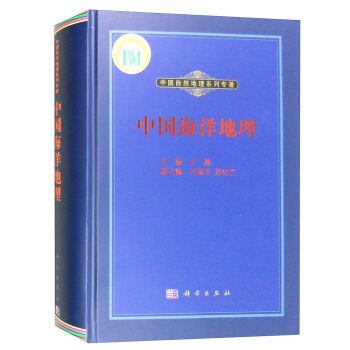
![西藏高原水文特徵及其數學模擬 [The Hydrological Features and Their Dynamic Simulation in Tibet Plateau] pdf epub mobi 電子書 下載](https://pic.windowsfront.com/11925906/57c53906Nd55dcd76.jpg)
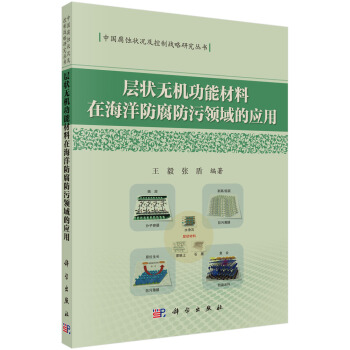
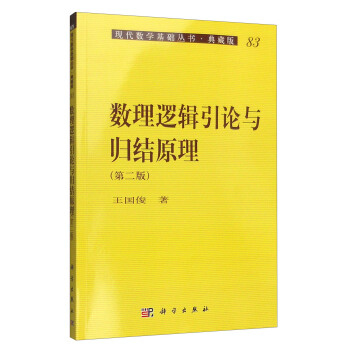
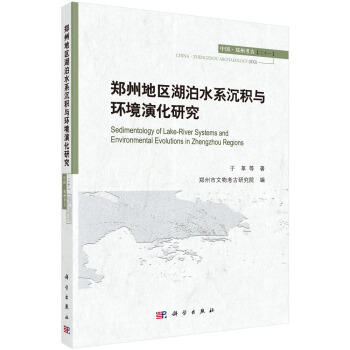
![數論導引提要及習題解答 [The Number Theory Guidance and Problem Solutions] pdf epub mobi 電子書 下載](https://pic.windowsfront.com/11930102/57329599N7a7218c5.jpg)


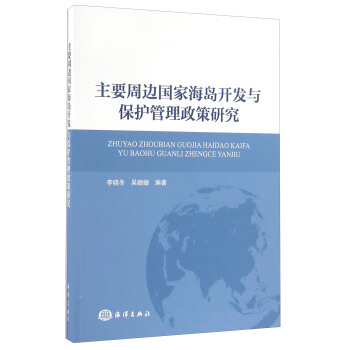
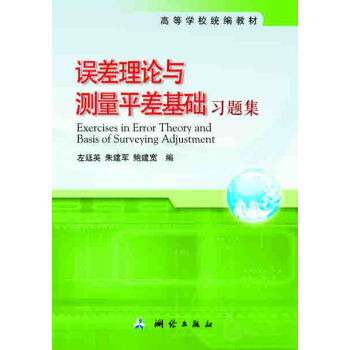
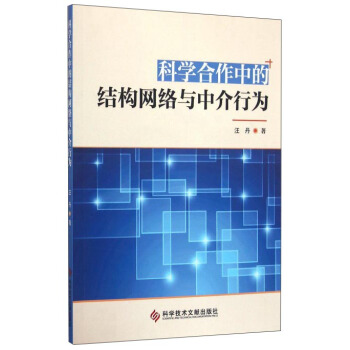


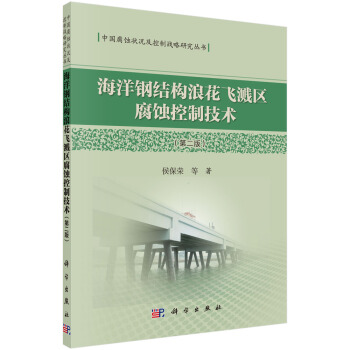




![國外數學名著係列(續一 影印版)56:幾何II 常麯率空間 [Geometry 2:Spaces of Constant Curvature] pdf epub mobi 電子書 下載](https://pic.windowsfront.com/11946874/5773bd83N437a9390.jpg)
